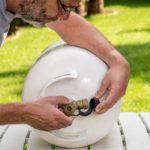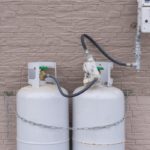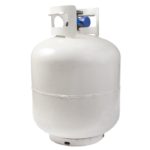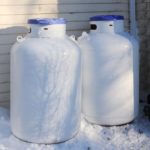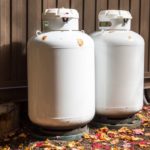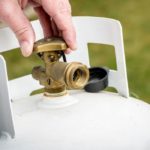With winter storms and sub-zero temperatures becoming more common in the United States, the use of portable propane heaters for temporarily heating up residences hit by power failures has also increased. But if you’re going to use your propane heater inside, where should you keep the propane tank?
Using a propane tank indoors is highly dangerous and, in most places, illegal. An indoor heater powered by electricity is the safer option. Burning propane indoors leads to buildup of toxic gases that can cause asphyxiation. Keep a propane tank at least 10ft(3m) from your house when in use.
While it might seem harmless, improperly using a propane tank can harm your home, property, and even your life. So, let’s look at whether you should use a propane tank indoors, the safety measures you should take with indoor propane heaters, and how close you should place the tank to your house.
Are You Allowed to Use Propane Tanks Indoors?
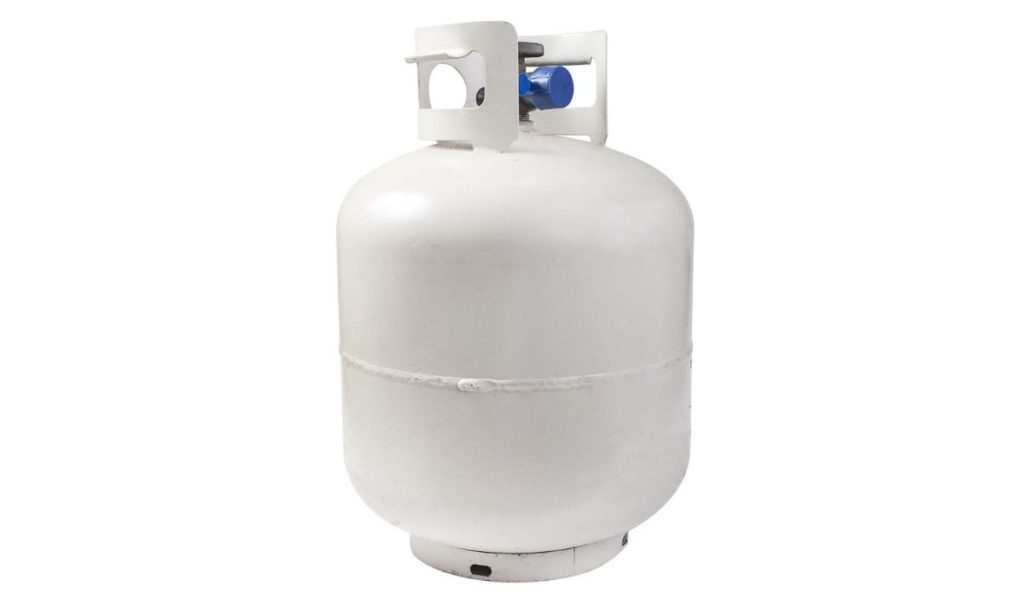
Since propane tanks are refillable and portable, it might seem fine to use them wherever you need them. However, using propane tanks indoors is illegal and extremely dangerous, so make sure you never store or use them inside your house.
You can only safely use propane gas cylinders outdoors, as stated by the National Fire Protection Association (code 58). It’s important to remember that these tanks contain enough fuel to produce more than 300 cubic feet of dangerous, combustible vapor. So, a fuel source like that should only be stored outdoors and must never be used indoors.
Can Propane Tanks Be Used Safely In a Screened-In Porch?
Due to the fire risk of propane tanks, it’s not advisable to use them on a screened-in porch. However, you can use the tank with a tower space heater outdoors as long as you follow a few safety rules to enhance the safety of your porch:
- Make sure the space is large and has at least two or three feet of distance between the heater and the enclosure’s roof.
- Maintain a distance of six feet between the heater and any wood structures on the porch, such as tables, chairs, and umbrellas.
- Position the open flame of the heater towards the outside of your screened-in porch so that the heat is dispersed evenly within the enclosed area.
Make sure you never connect your propane tank to a gas grill on your screened-in porch, as it’s extremely dangerous and can result in disastrous consequences.
If you’re unsure whether you should place a permanent gas heating device on your screened-in porch, contact a licensed or certified professional before finalizing your decision. It’s also important to determine the safety regulations and bylaws that apply to your specific situation, especially if you own a pub or restaurant that uses the porch as seating space.
Are Indoor Propane Heaters Safe?
Indoor propane heaters are quite safe, as long as they’re used properly. However, remember that not all propane heaters are safe for indoor use, and some can cause carbon monoxide poisoning.
If you’re planning on purchasing a portable propane heater to heat your chilly workshop or garage or to use as a backup during power outages, make sure you opt for one that’s designated as indoor-safe, such as the Mr. Heater Portable Propane Heater (on Amazon).
Indoor-safe propane heaters come with an oxygen depletion sensor that automatically shuts off the heater if the airflow is constricted and falls below a certain level.
You should take a few additional precautions while using an indoor-safe heater:
- Make sure you never put anything on top of the heater.
- Install carbon monoxide detectors (on Amazon) in the space where you plan to use the heater.
- No matter how cold it is, never leave your indoor-safe heater or any other fuel-burning appliance unattended or switched on while sleeping.
- Closely read the manufacturer’s operating instructions to ensure proper handling and use. It’s also better to read the safety features of the model and look for any information regarding indoor use.
How Close Can Propane Tanks Be to Your House?
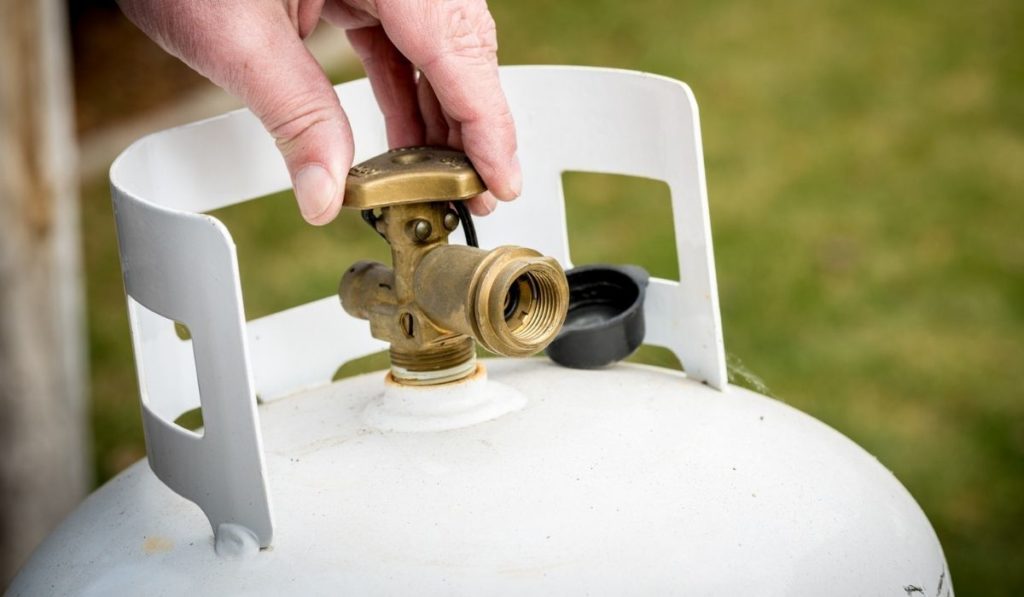
The National Fire Protection Association and the Occupational Safety and Health Administration have set a few general propane tank distance rules. However, your local authorities might have stricter distance rules, so make sure you check with your local propane companies or closest fire department to determine the exact rules you should follow.
According to the NFPA, your propane tank should be at least 10 feet away from your home at all times. Larger propane tanks should be placed at a farther distance from nearby buildings. Above-ground propane tanks also have stricter distance rules because of their high safety risk.
You can place underground tanks closer to nearby structures, such as vents, sheds, and pools. As a general rule of thumb, you should keep propane tanks under 500 gallons at least 10 feet away from the nearest structure.
Tanks containing 501 to 2,000 gallons of propane should be kept 25 feet away from the nearest building.
It’s also advisable to leave a distance of 3 feet between tanks containing 250 to 2,000 gallons of propane. This helps ensure that combustible liquids and vapors are not too close to your home, reducing the damage that can be caused by a potential emergency or fire.
Safety Relief Valve Distance
The safety relief valve of a propane tank releases excess propane gas to reduce the pressure of the tank. For this reason, you must ensure it’s not obstructed and store it away from any sources of ignition.
It’s advisable to call your local propane companies and ask them about the safety precautions you need to take with relief valves before purchasing a tank.


